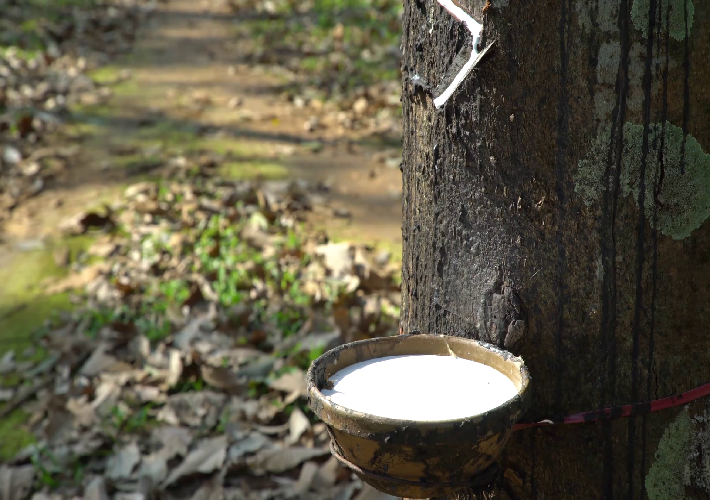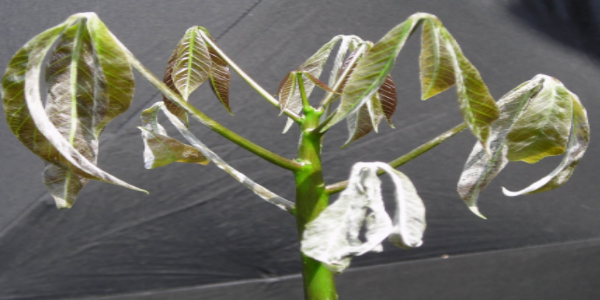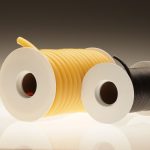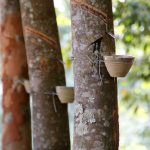
Rubber trees are well known for their silky evergreen foliage. It is also referred as FicusElastica. It serves as outdoor ornamentals and houseplants in frost free environment. They are large when grows in the wild. It responds to pruning. If you wish, you can maintain tree in small size by trimming regularly. It should be properly taken care to avoid from diseases or pests. If you fail to leave the tree in dark conditions or weaken by overwatering, it has chances to get affected by various illnesses. Top pest control information websites like Pest Control Plus, Pestcontrol.housejoy and Hicare offer bests ideas and tops to solve pest issues common in the rubber industry. But certain companies like www.orkin.com offer treatment for home and office rodents, pests and termites. They do not deal with rubber industry pest issues.
Here in this blog, let us discuss the pest issues faced by the rubber industries.
Southern Blight:
SclerotiumRolfsii is the fungus that causes southern blight. It is a simple preventable moisture associated infection. It is mostly seen in rubber trees especially in summer months. Some of the early symptoms of fungus include yellow or reddish spots on the subordinate leaves. It is seen mostly in plants that are overwatered or regularly misted. When the infection develops, you will see bunch of cotton fungi and hard brown lumps around the basement of stems. It will slowly spread from stems to the leaves. It is hard to treat as it is a devastating infection. The best option is prevention of fungus. When you are repotting rubber trees, you need to use sterilized potting medium. It should be water cautiously during growing season. Ensure to maintain the leaves dry.

Crown Gall:
The stems and roots of rubber trees get affected by a bacterial infection called crown gall. Agrobacterium tumefaciens is the bacteria that causes this infection. It is characterized by enflamed areasaround the stems. It can cause huge disfiguring multitudes to appear. These conditions are dangerous to the plant. Due to this condition, the roots get affected. It inhibits from absorbing moisture and nutrients. Unluckily, there is no cure for crown gall. If the plants get infected, it has to be immediately destroyed to avoid bacterium spread.
Xanthomonas Leaf Spot:
It is one of the highly common diseases seen in rubber trees. Xanthomonas leaf spot is caused due to a bacteria named Xanthomonascampestris. When it affects the rubber tree, you can see small oozing spots appearing around the leaves. It makes the leaves turn yellow and die. At the start, it grows and surrounded by yellow discolorations. It gets spread along the leaf veins. If you apply copper-based bactericides early, you can prevent the infection from scattering. It should not be overused since it has chances to affect the healthy tissue. Some of the best ways to preventXanthomonas leaf spot- avoid excessive watering and use fertilizer sparingly.
Mealybugs:
Small waxy white insects that colonize basements of rubber tree leaves is referred as mealybugs. Some early symptoms of mealybug infestation include dry looking or droopy leaves and presence of cotton like multitudes on the basement of leaves and along leaf attachment areas. It is difficult to remove the mealybugsmanually and it is not an effective option. It is best to spray water and alcohol solution on the affected parts. It helps to reduce the infestation severity.
Thrips:
Tiny winged insects referred as thrips easily attack the rubber trees. Certain growers of rubber trees remain unaffected to thrip infestations. Ficus houseplants are more commonly available and remain susceptible. Some early signs include silvery gray blemishing behind the leaves where nourishing has occurred. It makes the infested leaves to coil and drop. You can use commercially available insecticide to prevent and control thrip infestation.
Corynespora leaf fall:
The rubber tree is exposed to numerous diseases and pests like other agricultural crops. In 1900, the first disease on rubber tree was detected. Since then, about one hundred maladies and diseases were reported all over the world. There are several tools present to diagnose, treat and prevent the diseases and pests. Tools are available for breeders, extension and academic officers and plant protectionists.
Corynespora leaf fall is the most dangerous disease among various maladies. At present, Corynespora leaf fall condition is seen in majority of rubber growing countries like Africa and Asia. Recently, Myanmar has reported about this condition. Majority of the exceptional clones in the world have chances to get affected by now. One of the famous clones in Africa is IRCA 18. It is the latest clone that has been affected.
Breeding for resistance:
Ensure to know the symptoms so that you can spot the condition as early as possible. When you detect the condition early, you can control and manage this deadly disease to a certain extent. It is important to remain responsive for disease surveillance maneuvers. During the breeding programme, give importance for Corynespora resistance. Ensure to release only the fighting clones to stakeholders.
Other new diseases that have been spreading:
Papaya mealy bag: It is also referred as Paracocusmarginatus. It is the recent insect attack that is spread during a rare heavy dry spell.
Target leaf spot: It is referred as Thanatephoruscucumeris. It is a fungal disease.
Sclerotium collar rot: It is referred as Sclerotiumrolfsii. It is a nursery disease.
Sudden witt and foot Canker: It is also referred as Nattrassiamangiferae.





